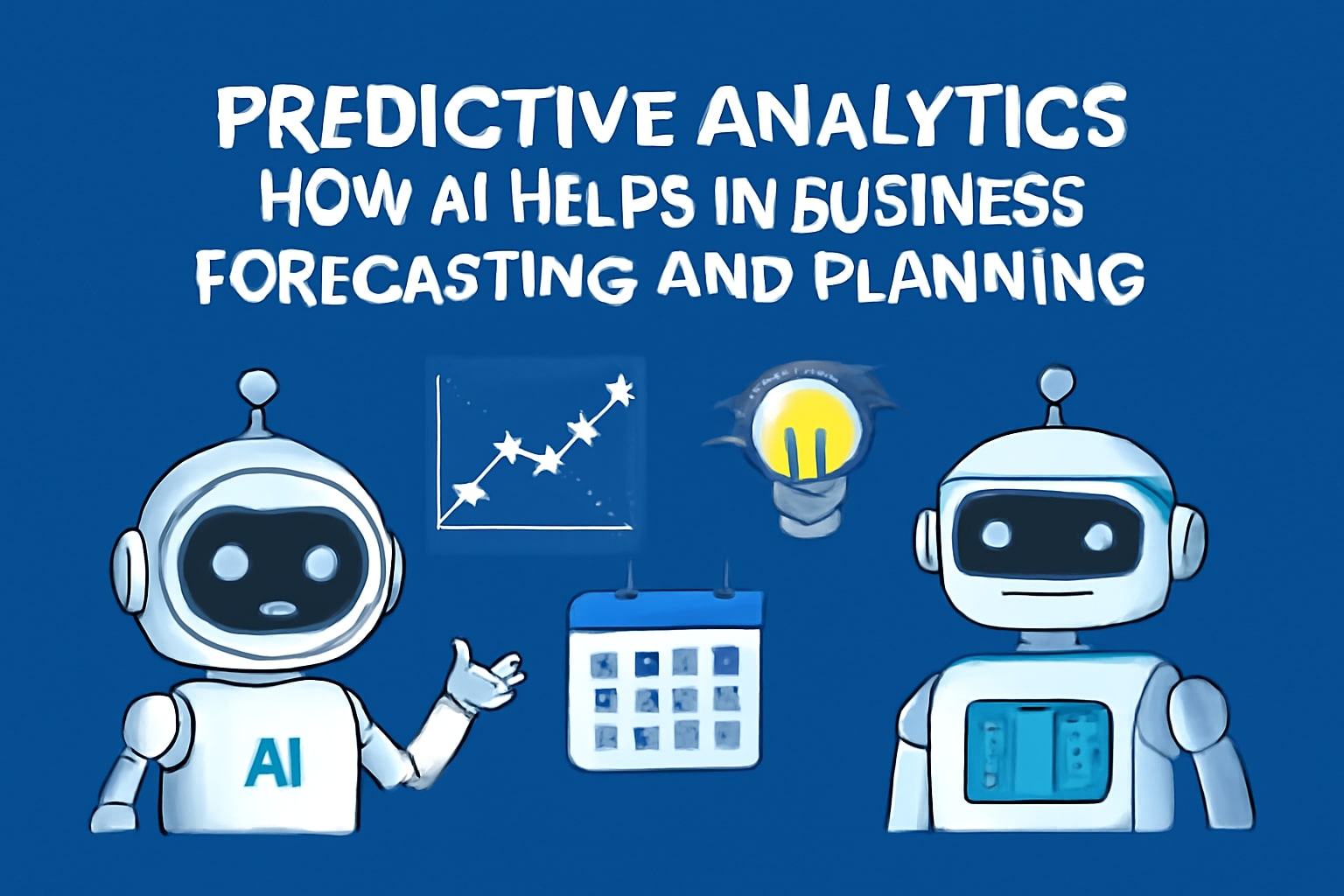Gone are the days of relying solely on gut instinct and static spreadsheets for business planning. The future belongs to AI predictive analytics—a powerful application of artificial intelligence that uses historical data to forecast future outcomes with stunning accuracy. Here’s how predictive analytics in business is transforming forecasting and strategic planning.
What is Predictive Analytics in Business?
At its core, predictive analytics uses statistical algorithms and machine learning techniques to analyze current and historical data to make predictions about future events. It’s the difference between looking in the rearview mirror and having a GPS that forecasts traffic jams ahead. When powered by AI, predictive analytics becomes a game-changer for business leaders.
Top Applications of AI Predictive Analytics
1. Demand Forecasting and Inventory Management
How it works: AI models analyze sales history, seasonality, promotions, weather data, and even social media trends to predict future product demand.
Benefit: Businesses can optimize inventory levels, reducing the costs of both overstocking (tying up capital) and understocking (missing sales). Retail giants like Amazon and Walmart rely heavily on predictive analytics for supply chain optimization.
2. Customer Churn Prediction
How it works: AI analyzes customer behavior patterns—such as decreased usage, support ticket history, and payment delays—to identify which customers are most likely to cancel or stop buying.
Benefit: Enables proactive retention campaigns. Instead of reacting to churn, businesses can offer at-risk customers incentives or support to keep them engaged, improving customer lifetime value.
3. Sales Forecasting and Pipeline Management
How it works: AI tools integrated with CRMs (like Salesforce Einstein or HubSpot AI) analyze past deal characteristics, rep activity data, and market signals to predict lead conversion and sales revenue.
Benefit: Provides more accurate revenue forecasts, helps prioritize the hottest leads, and highlights bottlenecks in the sales process.
4. Predictive Maintenance
How it works: For manufacturing and logistics, AI analyzes sensor data from machinery to predict when a part is likely to fail.
Benefit: Companies can schedule maintenance just before predicted failures, avoiding costly downtime and extending equipment lifespan. Industry leaders like GE and Siemens use predictive maintenance extensively.
5. Financial Risk and Fraud Detection
How it works: Banks and fintech companies use AI predictive analytics to analyze transaction patterns in real-time and detect anomalies that may indicate fraud.
Benefit: Protects customer assets and company revenue by stopping fraud before it happens. It also improves credit risk assessment for lending decisions.
How to Get Started with AI Predictive Analytics
- Data Foundation: Ensure you have clean, organized data. AI models are only as good as the data they’re trained on.
- Identify a Key Question: Start with a specific business problem. For example: “Which customers are most likely to churn?”
- Choose the Right Tool: Use platforms like Salesforce, Microsoft Power BI, or HubSpot, which already offer predictive analytics features.
- Test and Iterate: Start with a pilot project, measure performance, then expand into other business areas.
AI predictive analytics moves business planning from a reactive to a proactive discipline. It reduces uncertainty and empowers leaders to make smarter, data-driven decisions. To explore further, check Harvard Business Review’s guide on predictive analytics or read our AI business trends for 2025.
